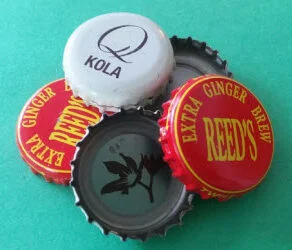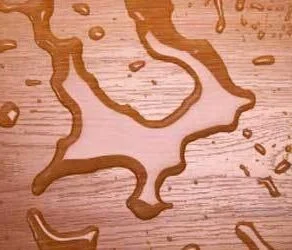Amy asked: I cleaned out a reusable water bottle with soap. Now, I can’t get the taste of soap out. Any suggestions? I have rinsed it with water many, many times. I’m afraid to put lemon juice or vinegar into it because I’m afraid I won’t be able to get those out as well.
Reusable water bottles are made from plastic, which is porous and can absorb its contents and seem to hold onto them for a long time. In this case, the plastic has absorbed some of the soap and it slowly releases when it is filled with water. The first step is to neutralize the soap/detergent and rinse it quickly to get rid of the soapy taste. Then, in the future, avoid letting any soaps or cleaning solutions sit in the water bottle for any length of time. By giving it a quick wash, rinse and allowing it dry thoroughly after each use, the water bottle will stay clean, mold free and ready to offer a fresh drink each time.
water bottles are made from plastic, which is porous and can absorb its contents and seem to hold onto them for a long time. In this case, the plastic has absorbed some of the soap and it slowly releases when it is filled with water. The first step is to neutralize the soap/detergent and rinse it quickly to get rid of the soapy taste. Then, in the future, avoid letting any soaps or cleaning solutions sit in the water bottle for any length of time. By giving it a quick wash, rinse and allowing it dry thoroughly after each use, the water bottle will stay clean, mold free and ready to offer a fresh drink each time.
You Will Need:
- Bleach
- Hot water
- Drying rack
- Spray bottle (optional)
Steps to Remove the Soapy Taste:
- Start by washing the bottle and rinsing immediately.
- Place a small amount of bleach in the bottle and fill with hot water. It is often convenient to keep a spray bottle filled with bleach under the sink for quick clean-ups.
- Place the lid on the bottle and shake it for 15 seconds.
- Dump out the contents and rinse thoroughly.
- Place the bottle upside down on a drying rack and allow it to dry completely.
Additional Tips and General Cleaning Information
- For daily cleaning, simply wash the bottle with regular dish detergent and rinse immediately. Place on a drying rack and allow it to dry completely.
- If black spots appear in the bottom of the water bottle, it means mold has started to grow. It may work to sanitize it using the method above. If the spots are not removed, recycle the bottle and start fresh with a new one.
- If the soapy taste is not removed with bleach, it may help to try lemon juice or vinegar, using the same methods. If none of these remove the flavor, it will be necessary to recycle the bottle and start fresh with a new one.
- If the bottle smells like bleach afterward, this smell can be removed by soaking the bottle for a minute in either white vinegar, lemon juice, or milk.









Keeping a spray bottle of bleach is a good idea, but you cannot keep a water and bleach mixture. You have to mix a new batch every time you use it, because the bleach will be contaminated and turn a brownish-black color.
To clean soapy smell and taste from plastic containers, I use vinegar and baking soda. Put vinegar in first, then baking soda (3:1); let that soak for a while, then add very hot water to the container and let it sit again (even overnight). Rinse in very hot water.
To avoid the need to soak – never leave soapy water in the container. Immediately rinse when washing and use hot, hot water.
Since detergent and soap are mild alkaline solutions, the best way to neutralize the soapy-tasting plastic bottle is to use a mild acidic solution, such as distilled white vinegar (which has the least amount of odor and taste for types of vinegar), or lemon juice, diluted with water. Let it soak for 15 to 30 minutes and rinse it very well with hot water followed by a cold rinse to close the pores in the plastic and allow it to dry completely. As stated in the article above, if none of the methods presented here remove the soapy taste, you may have to discard the bottle and start over with a new one. Good luck!
Don’t be afraid of lemon juice and baking soda. They’re the best methods; no soap or bleach needed. I use them both on my Nalgenes to get them back to normal.
That soap taste or perfume taste is from phalates. Try using a phalate-free soap. It may not take it out of the current bottle, but I had the same problem with my french press and switched to phalate-free dish soap, and that did the trick without me having to toss it out and start over. My french press is mostly glass, but the top isn’t. It’s a hard plastic. So your bottle may be too soft a plastic. What does that tell you about plastic? Consider switching to a glass bottle with that protective rubber coating around it.
Doesn’t ring true, soapy taste from phthalate-free dish soap…
It helps to use de-oxygenated water for drinking. The pure hydrogen won’t permit the mold to grow and it makes going up hills easier also!
Spray oven cleaner inside the bottle, fill with water and shake, then, rinse well. Poor some bleach in with water and shake, then rinse well.
Only use Dawn–the blue stuff is fine–to clean out bottles, jars, etc. Don’t ever use anything scented or that “softens hands while you do dishes,” ’cause you just might later be consuming the same residue that is intended to stick to you.
1. Wash with Dawn and rinse to get as much of the soap out as possible.
2. Put about 3/4 shot of vodka, or 1/2 shot of ethanol (Everclear, Mohawk, “pure grain alcohol,” etc.; mind the flammability), into the container.
3. Fill to no more than 1/2 full with water.
4. Seal and shake vigorously to dissolve the soap and ethanol into the water.
5. Unseal and empty all contents, noting whether any heavy suds form.
6. Rinse one last time.
7. In the highly unlikely event that suds persist, repeat; otherwise, the container should be ridiculously clean.
I do this all the time with bottles, flasks, and other containers made of glass, SS, and plastic. Pure ethanol is a great deodorizer for any porous and non-porous material that it happens to be safe to use on, acting as a solvent on many organic scent compounds. Don’t rely on it to sanitize though.